Geotourism in the Azores
The volcanic origin of the Azores archipelago boasts 1766 volcanoes, nine of which are still active. This particular origin creates a landscape made of drained calderas around green-covered mouths, thermal springs, lakes that occupy the place of ancient craters, fumarole fields and underwater geothermal sources. A unique panorama.
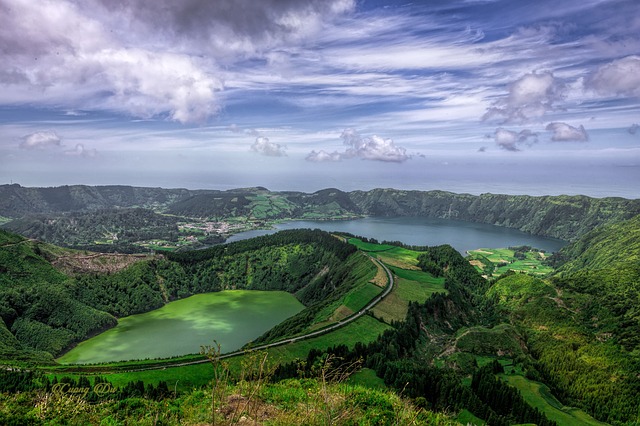
Over the archipelago and its volcanic richness stands the mountain of Pico with its 2,350 meters high and its snow-white cone. Pico like the other volcanic areas are all viable and practicable explorations, with different degrees of difficulty and interest for simple enthusiasts or volcanism scholars, thanks to its impressive spectacularity and diversity.
The Azores Geopark has become part of the European Network and the Global Network of Geoparks under the aegis of UNESCO since 2013, enhancing the great scientific, tourist and educational significance of the geosites of the Archipelago.
Throughout the archipelago there are about 300 natural caves, caves and vertical pits, even if only partially they are open to the public. To visit volcanological areas not open to the public, you can still contact the Azores Regional Government, through the Regional Environment and Sea Secretariat.
Of course, the exploration of the caves can be undertaken, for scientific or sporting purposes or simply for tourism, only with the appropriate equipment and accompanied by a specialized Guide. Visits can be made at any time of the year: in spring / summer during fixed opening hours, in other periods of the year by booking in advance. The other areas of volcanological interest in the open air can always be visited.
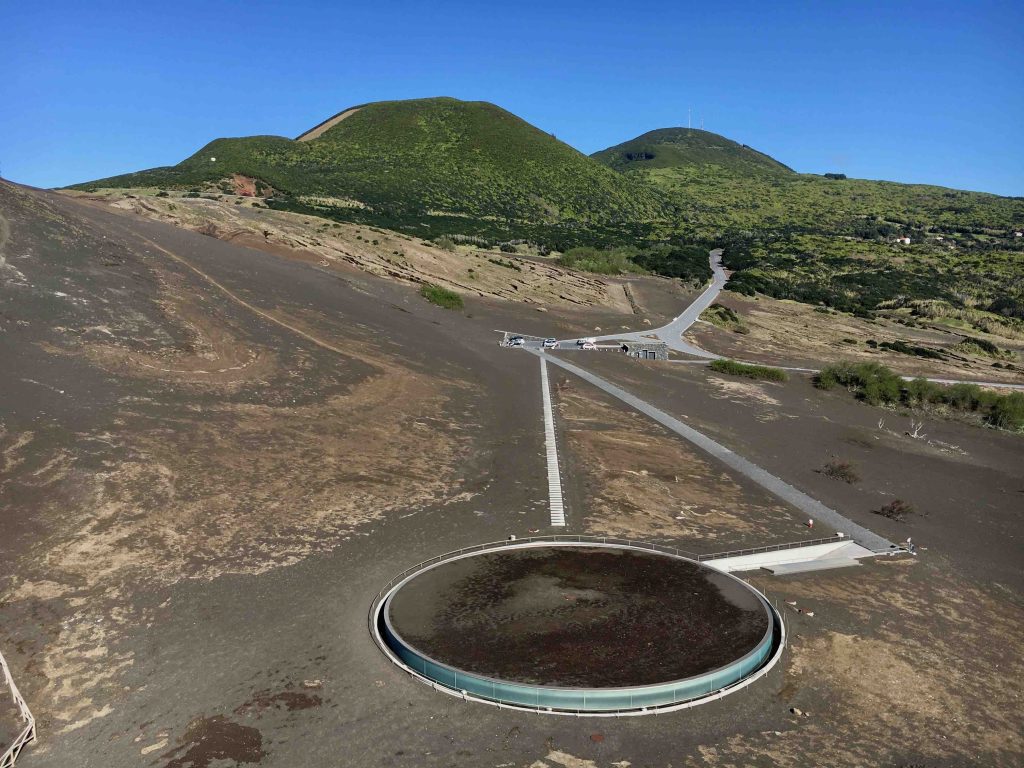
In addition to the interpretation centers of the volcanic caves open to the public, the archipelago has various scientific centers that help to understand the Azorean geological heritage, such as The Interpretation Center of the Capelinhos Volcano, in Faial, which offers films, holograms and contents multimedia. Other places of interest are: the Os Montanheiros volcano-speleological museum, (Terceira), the mountain house (Pico), the astronomical observatory, the ExpoLAB and the Azores volcanological and geothermal observatory in São Miguel.
All sites, museums and interpretation centers are open and available for study visits, always agreeing on the activity with the Azores Regional Government, through the Regional Environment and Sea Secretariat.All volcanic activities offer different levels of use: scientific, sporting but also simply tourist, also suitable for families and children: it is really simple to organize a day that gives young and old a descent into the depths of the earth, a walk among the green woods and the view of the ocean and a final and refreshing bath in a natural lava pool.
Santa Maria
the oldest island of the Azores gives us the basaltic flows of Pedreira do Campo and Ribeira do Maloás, the Barreiro da Faneca, known as the “red desert”, the 110-meter Aveiro waterfall.
São Miguel
in São Miguel we find the large volcanic lakes, algosa, such as Sete Cidades, Lagoa do Fogo or Furnas in addition to many others, the crater of Povoação, the natural hot water pools of Caldeira Velha, of Poça da Beija, of Caldeiras of Ribeira Grande, of Furnas.
Terceira
in Terceira, the Algar do Carvão deserves special mention, where you can see the remains of an ancient and vast volcanic pipeline, from which hang the largest silicon stalactites in the world. We also mention La Gruta do Natal, the Furnas do Enxofre with its fumaroles and the thermal waters of Carapacho.
Graciosa
Caldeira da Graciosa is the most emblematic landscape element of the island, with a depth of about 270 meters and a diameter ranging from 1.6 to 0.8 kilometers. Inside the Caldeira and its volcanic cavity you can visit the Furna do Enxofre (‘sulfur cave’) which communicates with the outside through two large slits: it is a perfect vaulted cavity, 40 meters high in its central part in which is accessed by entering a tower built in the early twentieth century by going down a spiral staircase of 183 steps. In this volcanic cavity it is possible to admire a lake of cold water and a muddy fumarole with a strong sulfur smell. Also in Graciosa we find the Caldeirinha de Pêro Botelho, the only well cave on the island of about 37 meters deep, which can only be visited by experts and speleologists.
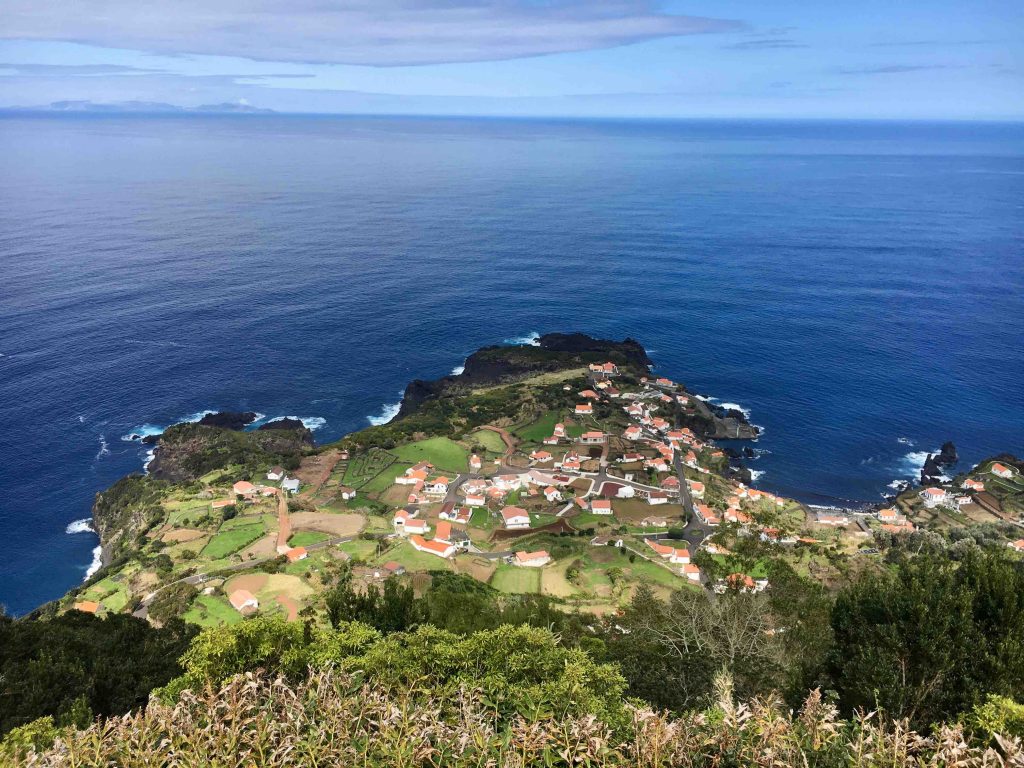
São Jorge
The volcanic typicality of São Jorge are the fajãs, flat surfaces by the sea surrounded by cliffs. The fajãs are the result of lava eruptions that entered the sea or landslides of earth and rock of the cliffs that precipitated due to seismic shocks, intense rains or other natural phenomena. The widespread network of trails on the island allows you to visit the over 70 fajãs of São Jorge with splendid trekking: from the detrital ones of Cubres and Caldeira de Santo Cristo, to the lava fajãs of Ouvidor, Velas and Almas. The central mountain range of São Jorge is designed by about two hundred volcanic cones and craters of the Bocas do Fogo, now occupied by lakes, ponds or peat bogs.
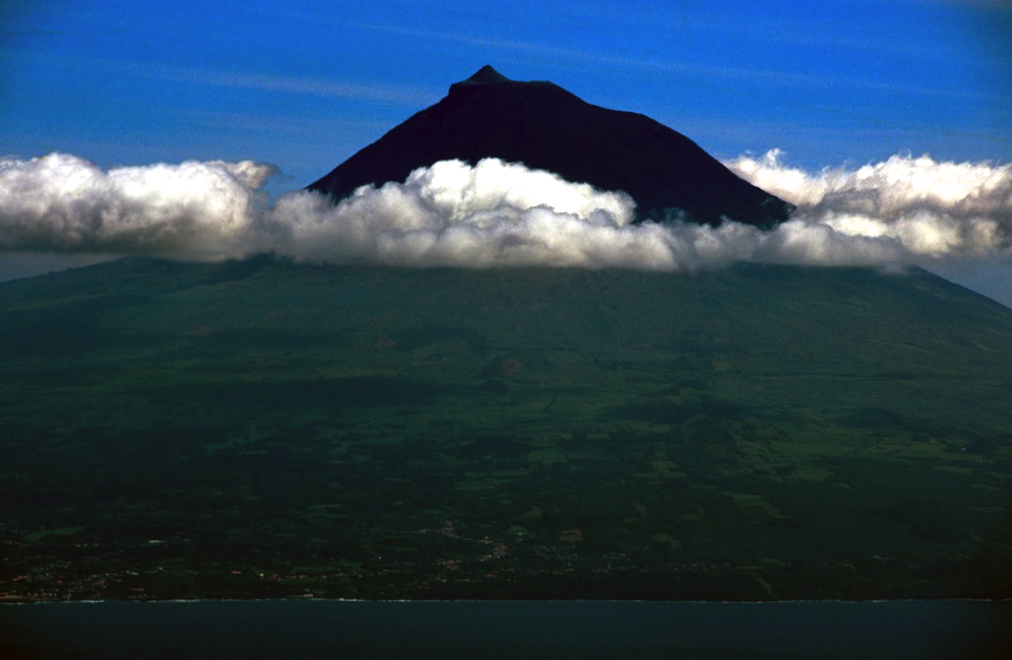
Pico
the volcanic nature of Pico is dominated by its majestic volcano of the same name, 2,350 m high and 19 km in average diameter, the third largest volcano in the entire Atlantic, which offers the possibility of simple trekking or ascents to the summit. However, there are about 200 volcanic cones on the island, which have also become ponds, lakes and peat bogs over the millennia. The real peculiarity of the island, in addition to the Pico volcano, are the basaltic lava fields, evocatively named by the local mistérios (‘mysteries’), such as the Mistério da Prainha and the mistérios of Santa Luzia, São João and Silveira.
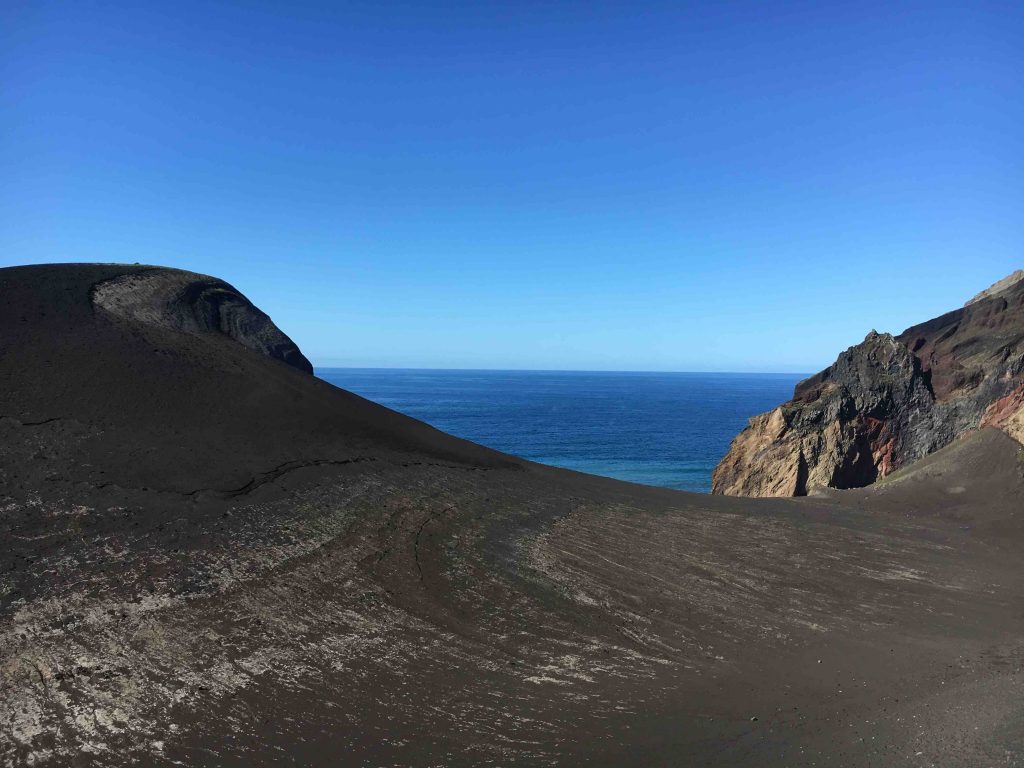
Faial
The first volcanic landmark of the island is the Caldeira, a volcanic depression with a perimeter of seven kilometers which can all be covered with a magnificent trek. The descents inside it must be organized and booked with authorized and specialized agencies: if you decide to venture, you can find a small volcanic cone, a pond and the remains of the primitive laurisilva forest, endemic to the Azores.
Another landmark volcano that characterizes the island of Faial at its western end is the Capelinhos volcano, witness of the last eruption that occurred in the Azores between 1957 and 1958, which added land to the island by increasing its extension. A lunar place, accessible on foot, made of black and red rocks, now verdant slopes, of cliffs overlooking the ocean. The area offers an Interpretation Center equipped with the most modern multimedia exhibition techniques.
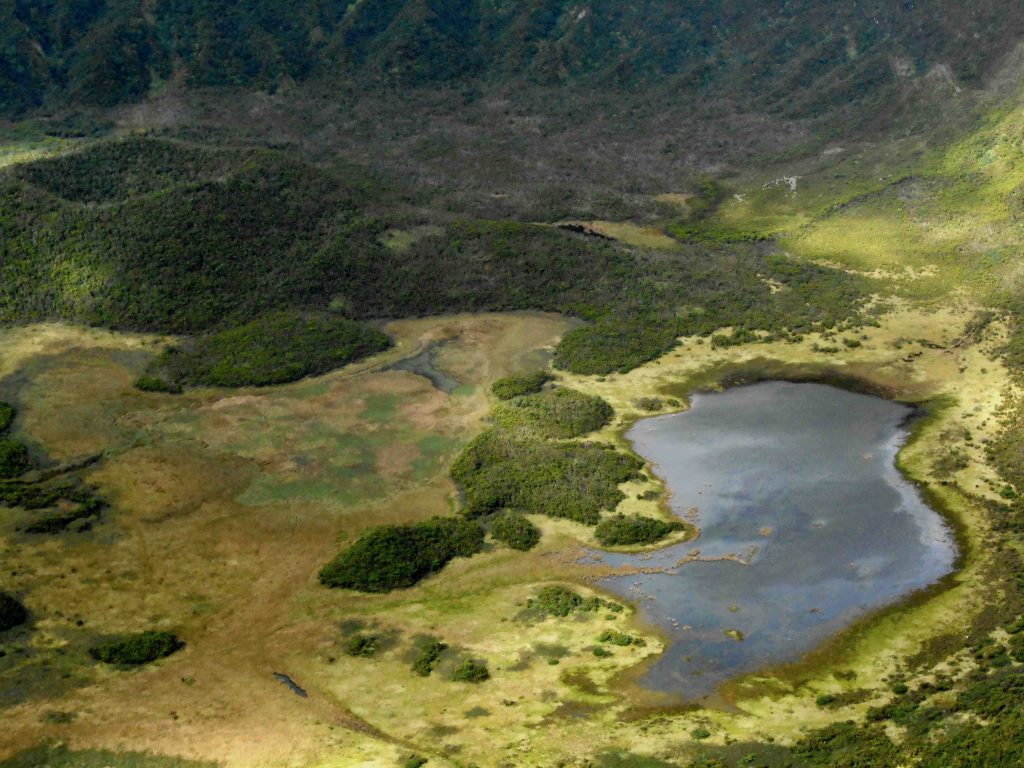
Flores
the island of Flores offers seven spectacular volcanic craters: in the center of the island are the craters of Caldeira Branca, Caldeira Seca, Caldeira Conprida and Caldeira Negra (or Funda), 105 meters deep. To the south we find Caldeira Rasa and Caldeira Funda and, more isolated from the others, the crater of Caldeira da Lomba.
The volcanic specificity of the island, characterized by craters, lakes, streams, waterfalls, has created extensive and deep green valleys. The area of Fajã Grande – Fajãzinha has about twenty impressive waterfalls, among which that of Ribeira Grande, which make a jump of 300 meters. Also unique on the island is the Rocha dos Bordões, one of the most famous natural monuments of the Azores: a set of large basaltic columns with changing colors, partly covered by vegetation.
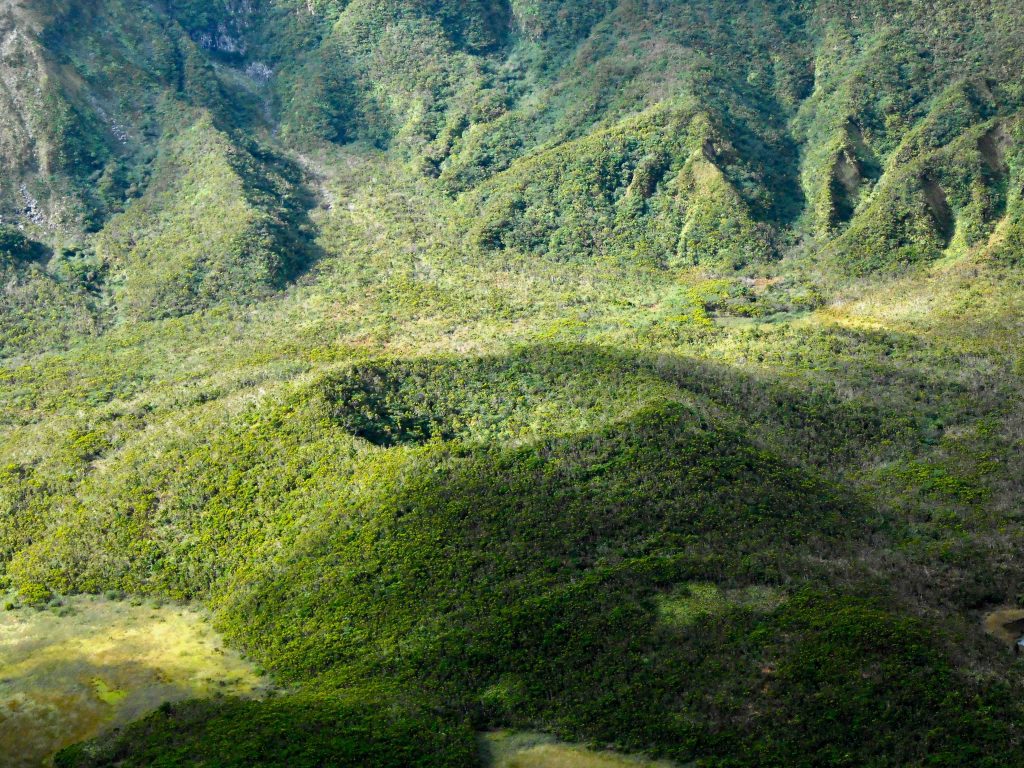
Corvo
Corvo island, which can be defined as one of the most remote points in Europe, is characterized by the Caldeirão crater, elliptical in shape with a depth of approximately 305 meters and a maximum diameter of 2.3 kilometers.
The crater, born from the collapse of the top of the central volcano, has a small volcanic cones on its bottom that draw individual pools of water in its shallow lake. The coasts of lava that develop between Portinho da Areia and Ponta Negra, with their submarine continuations, the so-called caneiros, are the place of choice for scuba diving.








